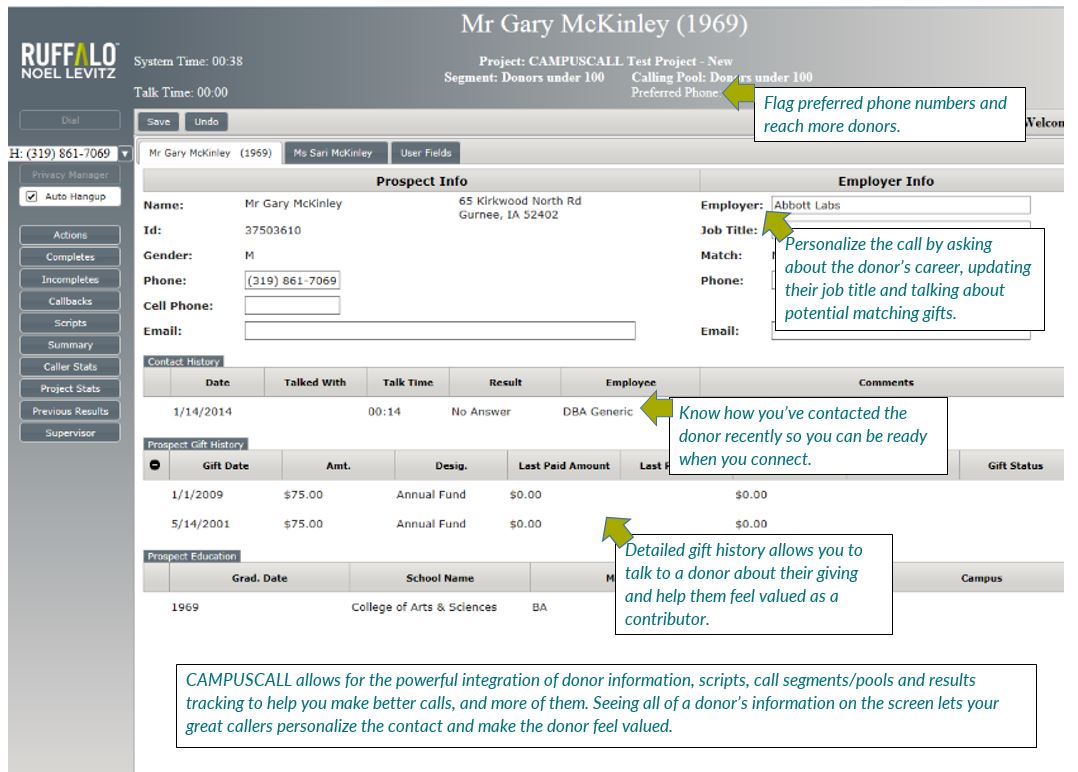fundraising
How technology enables better fundraising conversations with donors
What do you need to know to ask a donor for a gift? Certainly their last gift amount. Probably some information about their history with your organization. In higher education, this includes a class year, major, and school when having fundraising conversations with donors.
A good phonathon caller can take this information and turn it into a conversation like this:
“Thank you Mrs. X, for supporting the University fund last year as a member of the class of 1986. Can we ask you to continue your support this year with a gift of X?”
But what information do you need to take a good conversation and elevate to a level that really engages the donor? You can really transform those conversations when you have relevant data such as:
- An expanded giving history of several years
- How donors gave before and what they donated to
- Information about their involvement when they were in school and after graduation, including volunteer experiences
- Full contact and employment information
The fundraising conversations that come from this information, from a great phonathon caller, might sound like this:
“Thank you, Mrs. X for giving every year for the past five years. And for increasing your gift. Can you tell me about your time in the Physics program at the university? I see you’re a VP at an engineering firm. What do you most value about your experience in school that helps you do your work? Thanks for sharing that. As I said, your loyal donations really make a difference so students like me can receive a great education today. I’d like to ask if you would be willing to once again increase your giving and join the Dean’s Club with a gift of X…”
Now you have a conversation that has the best chance of engaging the donor and showing them that you are seeing them as an individual.

The next step is to conclude these powerful fundraising conversations with an instant transaction—the ability to process a pledge with a donor’s credit or debit card to make giving easy— and then sending a follow up email to thank the donor while also sharing stories about the impact of gifts at your institution. That’s how your donor engagement—and your results—move to the next level.
Investing in the right technology allows a shift to powerful, donor-centered personalization.And when your technology allows this to happen efficiently and in a way that callers can put into action call after call, your response level from donors can go up exponentially. This requires investment on your part to seek and assemble the data for callers, and a good system that allows callers to see information and put it into action instantly.
You wouldn’t fly out to meet with a donor prospect without fully reviewing their giving history, involvement and background with your institution.You wouldn’t open the conversation after making the trip with a generic question. You would do your homework and show that you value the donor by personalizing the interaction as much as possible. Personalization is what good gift officers do.
Your student telefund ambassadors are gift officers. They connect with hundreds of prospective and loyal supporters each night. They need the tools to have quality, personalized conversations and follow through to the gift. And the great thing is that a personalization system like this allows callers to capture more information, which feeds back into your database and increases the effectiveness of future conversations and solicitations.
To find out how CAMPUSCALL, the industry standard in phonathon enablement, makes this all happen, attend a webinar illustrating how phonathon platform effects engagement, and afterward, we’ll talk with you how your program can grow to the next level.